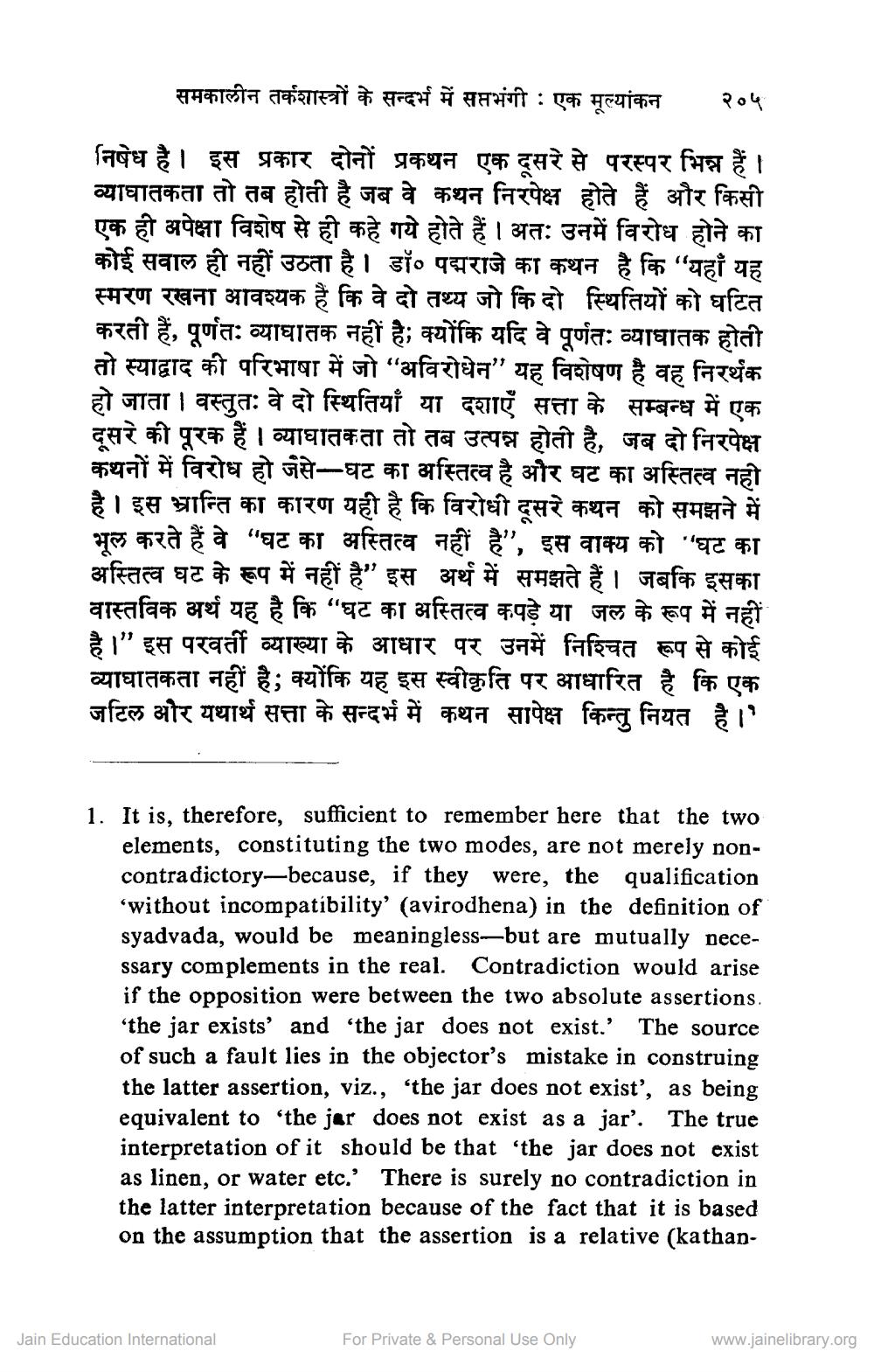________________
समकालीन तर्कशास्त्रों के सन्दर्भ में सप्तभंगी : एक मूल्यांकन
२०५
निषेध है। इस प्रकार दोनों प्रकथन एक दूसरे से परस्पर भिन्न हैं। व्याघातकता तो तब होती है जब वे कथन निरपेक्ष होते हैं और किसी एक ही अपेक्षा विशेष से ही कहे गये होते हैं । अतः उनमें विरोध होने का कोई सवाल ही नहीं उठता है। डॉ० पद्मराजे का कथन है कि “यहाँ यह स्मरण रखना आवश्यक है कि वे दो तथ्य जो कि दो स्थितियों को घटित करती हैं, पूर्णतः व्याघातक नहीं है। क्योंकि यदि वे पूर्णतः व्याघातक होती तो स्याद्वाद की परिभाषा में जो "अविरोधेन" यह विशेषण है वह निरर्थक हो जाता । वस्तुतः वे दो स्थितियाँ या दशाएँ सत्ता के सम्बन्ध में एक दूसरे की पूरक हैं । व्याघातकता तो तब उत्पन्न होती है, जब दो निरपेक्ष कथनों में विरोध हो जैसे-घट का अस्तित्व है और घट का अस्तित्व नही है। इस भ्रान्ति का कारण यही है कि विरोधी दूसरे कथन को समझने में भल करते हैं वे "घट का अस्तित्व नहीं है", इस वाक्य को "घट का अस्तित्व घट के रूप में नहीं है" इस अर्थ में समझते हैं। जबकि इसका वास्तविक अर्थ यह है कि "घट का अस्तित्व कपड़े या जल के रूप में नहीं है।" इस परवर्ती व्याख्या के आधार पर उनमें निश्चित रूप से कोई व्याघातकता नहीं है। क्योंकि यह इस स्वीकृति पर आधारित है कि एक जटिल और यथार्थ सत्ता के सन्दर्भ में कथन सापेक्ष किन्तु नियत है।'
1. It is, therefore, sufficient to remember here that the two
elements, constituting the two modes, are not merely noncontradictory—because, if they were, the qualification 'without incompatibility' (avirodhena) in the definition of syadvada, would be meaningless—but are mutually necessary complements in the real. Contradiction would arise if the opposition were between the two absolute assertions. 'the jar exists' and 'the jar does not exist.' The source of such a fault lies in the objector's mistake in construing the latter assertion, viz., 'the jar does not exist', as being equivalent to the jar does not exist as a jar'. The true interpretation of it should be that 'the jar does not exist as linen, or water etc.' There is surely no contradiction in the latter interpretation because of the fact that it is based on the assumption that the assertion is a relative (kathan
Jain Education International
For Private & Personal Use Only
www.jainelibrary.org




